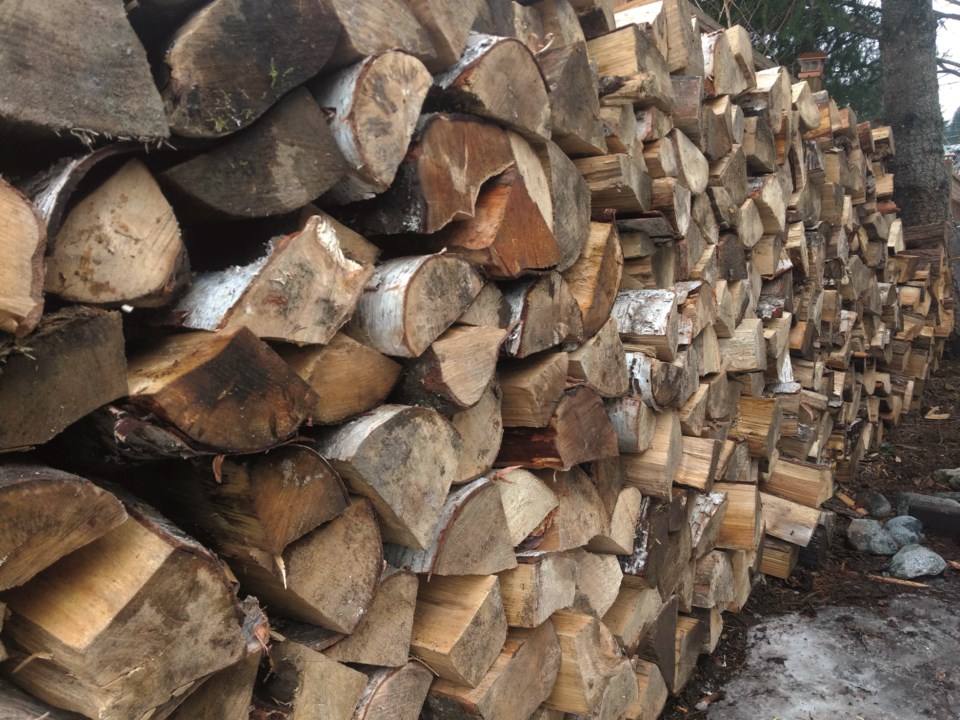In his bestselling book, Norwegian Wood: Chopping, Stacking and Drying Wood the Scandinavian Way, Lars Mytting writes about his nation’s long-running obsession with wood, and more specifically for our purposes, wood-stacking.
For good reason: A quarter of the country still heats their homes with wood, but beyond the practical applications of foraging, chopping, piling and burning the stuff, the Norwegians’ appreciation for wood runs deeper than that, to an almost spiritual level.
“It’s a way to honour the material and a reminder that nothing lasts forever,” Mytting told Wisconsin Public Radio in a 2016 interview.
The Norwegians are so serious about a good woodpile, in fact, that they believe a person’s stack can tell you a heck of a lot about them. According to Mytting, an upright and solid pile means an upright and solid man, while an unfinished pile could mean someone who is lazy, unstable and “prone to drunkenness.” Even worse is a pile with old and new wood stacked together, which could mean you’ve got a wood thief on your hands. Norwegians even love a little style to their pile, with photo contests in newspapers around the country showing off the most flamboyantly arranged stacks.
Canadians, you’ll be shocked to learn, tend to favour function over form, preferring square, orderly stacks over the rounded, criss-crossed piles that are the norm in Scandinavia. This is often to do with practicality: square piles take up less space, and can be more easily stored away from the elements. But given the fact that Scandinavians have been stacking wood for far longer than their Canuck counterparts, the method is about more than just aesthetics.
“Though our fellow Canadians may hate us for saying this, our vote goes to the Scandinavians,” wrote East Vancouver’s Union Wood Company on its website. “Placing wood in a radius pattern is the best way to stack firewood because it allows the wood to dry more rapidly. Other benefits: stacking it in a round takes less time, sheds water better (because the wood is at an angle), takes less space and makes the pile more stable.”
So what about Whistler, land of abundant forests and drafty A-frames? Ian “One-Match” Bunbury admits he doesn’t have the most artistic pile, but he has honed his method over the years to the point where it’s become a dedicated ritual he builds his day around.
“It’s taken me years to finally get to the place that I’m happy with it,” he said. “You’re always trying to find ways to make the job easier.
Andrew Nolan has similarly developed his own technique through seasons of trial and error, taking a more deliberate approach to his pile than he did in past years.
“I find if you’re going to stack some wood, you need to think about why you’re doing it,” he said, adding that he finds himself going to a “tranquil, Zen sort of state of mind” when he’s looking for the perfect piece of wood for the following season.
It’s this transportive quality that Pemberton’s Pete Cronin appreciates about wood: a roaring fire not only harkens back to the idyllic days of summer camps and sing-alongs, but to the moments you spent painstakingly chopping and assembling.
“Once you sit down and have your fire and enjoy the heat, you’re kind of enjoying all that work you put into it,” he said. “[Chopping wood] can take you forward to a future fire, but then when you’re enjoying the heat, it can also take you back to the day you chopped it or stacked it.”
Cronin, who has Mytting’s Norwegian Wood on his shelves, also takes a creative approach to stacking.
“Like most things I go at, there’s a bit of arty-fartiness about it,” he said. “I don’t just stack the wood. I try to make it fun and like to look back at it and go, ‘Well, that looks interesting.’”
All three men spoke about the meditative quality of splitting and stacking, formed through the ongoing dialogue between them and the wood.
“You get to know each piece of wood,” said Bunbury. “It’s a weird game. You either come to terms with it and keep doing it or you leave the property and move to an apartment where you can put on the thermostat.”




